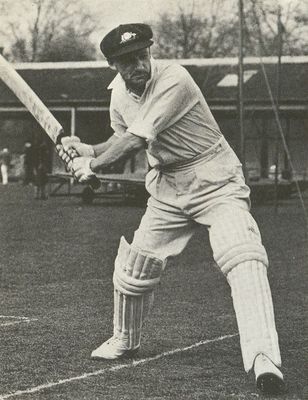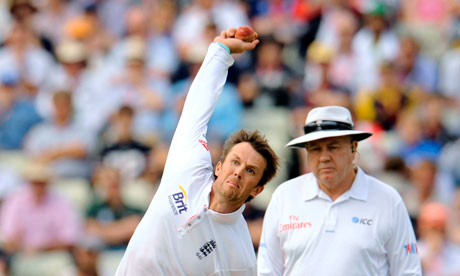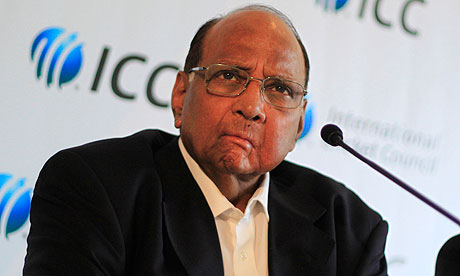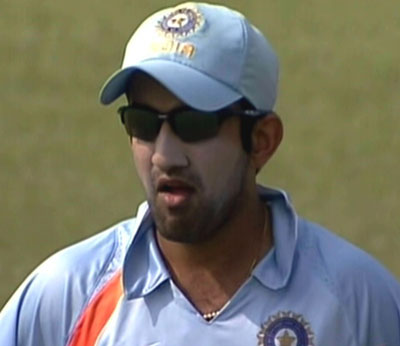OCR Unit 6.1
All about CricketThe objective of cricket is to score more runs than the opposition. In Test cricket both teams bat twice whilst in the one day forms of the game, they each have one innings.
Games Based Sport - Cricket
Players
Batsmen can play many shots which are listed below -
On drive
Reverse Sweep
Off drive
Pull Shot
Forward defence
Backward defence
Leave
Square Cut
Hook shot
Bowler – the bowler begins each ball with his run up. Spin bowlers have a short run up and fast bowlers need momentum so they have a long run up.
Then the bowler releases the ball. If the bowler is fast then the ball is released at the last second, however if the bowler is spin then the ball should be released at an earlier point.
Finally the bowler follows through to achieve more power.
Bowlers can bowl no balls and wides which give the batsmen extra runs. If you bowl a wide then the batsmen are immediately awarded one run. If a no ball is bowled in test cricket then a run is given to the batsmen and in one day cricket if a no ball is bowled then a run is given to the batsmen and a free hit is given. The only way you can be out from a no ball is if you are run out.
A wide is when the ball is delivered outside of the batsman’s hitting zone, either too high or too wide. A no ball can be bowled by an inappropriate arm action, stepping over the crease or having a foot outside of the return crease. In both instances, the ball has to be re - bowled
Fielders - all eleven players on the fielding side take the field together. One of them is the wicket keeper (also known as the keeper) who takes up a position behind the stumps being defended by the batsman on strike. Wicket - keeping is normally a specialist job and his primary job is to gather deliveries that the batsman does not hit, so that the batsmen cannot run byes.
The wicket keeper wears gloves which allow him to do his job, a box over the groin, and pads to cover his lower legs. The wicket - keeper has a good chance of getting a batsman out caught off a fine edge from the bat. He is the only player who can get a batsman out stumped.
Fielders - all eleven players on the fielding side take the field together. One of them is the wicket keeper (also known as the keeper) who takes up a position behind the stumps being defended by the batsman on strike. Wicket - keeping is normally a specialist job and his primary job is to gather deliveries that the batsman does not hit, so that the batsmen cannot run byes.
The wicket keeper wears gloves which allow him to do his job, a box over the groin, and pads to cover his lower legs. The wicket - keeper has a good chance of getting a batsman out caught off a fine edge from the bat. He is the only player who can get a batsman out stumped.
The captain is the most important member of the fielding side as he determines all the tactics including who wicket.
should bowl.
In all forms of cricket, if a fielder gets injured or becomes ill during a match, a substitute is allowed to field instead of him. The substitute cannot bat, bowl, act as a captain or keep
Umpires
 The game on the field is watched and regulated by two umpires, one of whom stands behind the wicket at the bowler's end, and the other in a position called square leg, a position 15 - 20 metres to the side of the on strike batsman. The third umpire can make decisions on certain incidents with the help of video evidence.
The game on the field is watched and regulated by two umpires, one of whom stands behind the wicket at the bowler's end, and the other in a position called square leg, a position 15 - 20 metres to the side of the on strike batsman. The third umpire can make decisions on certain incidents with the help of video evidence.The match referee holds the job of ensuring that play is within the Laws of cricket and the spirit of the game. Off the field, the match details including runs and dismissals are recorded by two official scorers who communicate with each other to ensure accurate scoring.
Equipment
|
Description
|
Picture
|
Helmets
|
Worn to protect the head against the ball
|  |
Pads
|
Worn to protect shins, arms and thighs
|  |
Spikes
|
Worn to grip the surface when running
|  |
Wicket Keeper gloves and inners
|
Worn to aid catching and protect hands
|  |
Box
|
Worn to protect the groin area
|  |
Batsmen gloves and inners
|
Worn to protect hands against the ball
|  |
Bat
|
Used to hit the ball, has a sweet spot and is often wooden
|  |
Ball
|
The ball is hard and is coated in leather
|  |
Stumps and Bails
| <><><><><><><><><><><><><><><><><><><><><><><><><><><><><><><><><><><><><><><><><>
The target for the bowler and if the balls hit the wicket the bails must be dislodged for a wicket to be awarded
|  |
The Pitch
The cricket pitch consists of the central strip of the cricket field between the wickets (22 yards) long and 10 feet (3 m) wide. The surface is very flat and normally covered with extremely short grass.
The cricket pitch consists of the central strip of the cricket field between the wickets (22 yards) long and 10 feet (3 m) wide. The surface is very flat and normally covered with extremely short grass.
Four lines, known as creases, are painted onto the pitch around the wicket areas to mark out the batsman's safe territory and the limit of the bowler's run up/approach.
When bowling the ball, the bowler's back foot in his delivery stride must land within the two return creases while his front foot must land on or behind the popping crease.
Important Records
Brian Lara scored 501 runs which is the highest first class cricket score. He also holds the record for the highest test score. (400 not out)
99.94 is the Test batting average of Sir Donald Bradman. He needed four runs in his last innings to average 100 however was bowled out for a duck!

Muttiah Muralitharan took 800 wickets in his career.
The highest amount of ducks (0) scored in Test cricket. The West Indian fast bowler Courtney Walsh holds the record.
Sachin Tendulkar is currently on 99 centuries (100 runs) and is looking for his 100th one.

My Inspirations
Alastair Cook - is my favourite batsmen of all time. His skill and timing is great and these statements are backed up by his statistics. He was on fire in 2010 and has carried on this form in 2011.http://www.youtube.com/watch?v=pJtd0FzQ1xA
Sachin Tendulkar - I believe Tendulkar is the best batsman ever. I believe he can outplay and dominate a game by himself. He can face a variety of balls and has brilliant balance.
http://www.youtube.com/watch?v=-UEHhFANO9A
Shane Warne - what I think is great about Shane Warne are his spin balls. I love watching him completely demolish batsmen and the best balls are when he spins the ball around batsmen’s legs! For me he is the best spin bowler ever, although Murali’s statistics suggest otherwise.http://www.youtube.com/watch?v=-UEHhFANO9A
http://www.youtube.com/watch?v=Ce4ZfLTentU&feature=relmfu
Stuart Broad - although he is not the best, Stuart Broad is passionate and persistent. He is completely on form and my highlight for him is his hat - trick against India in Englands most recent test series. I am a fast bowler myself and I like to vary my balls, rather like him.
http://www.youtube.com/watch?v=wewSTe_YHlQ&feature=related
http://www.youtube.com/watch?v=wewSTe_YHlQ&feature=related
Bowled: The ball hits the stumps
Leg before wicket (lbw): When the ball is going to hit the stumps but the batsmen gets in the way
Run out: When the ball is thrown or kicked at the stumps the batsman is out of his crease
Stumped: When the batsman is out of his crease and the wicket keeper touches the ball against the stumps. The ball must be firmly in his hands
Hit wicket: When the batsman hits the bails/stumps with his bat, body, clothing or while receiving a ball.
Hit the ball twice: When the batsman may play the ball a second time only to stop the ball hitting the wicket.
Obstructing the field: A batsman deliberately getting in the way of a fielder
Handled the ball: When the batsman handles the ball, e.g. to stop it hitting the wicket
Timed out: When the batsmen doesn’t arrive at the crease in time
Caught: When the batsmen hits the ball and it is caught without bouncing by a fielder
Governing Body
The cricket governing body is the ICC. ICC stands for the International Cricket Council. The ICC was originally founded as the Imperial Cricket Conference by English, Australian and South African representatives in 1909.
In 1965 the ICC name was changed to the International Cricket Conference, until it was changed to the International Cricket Council in 1989.
The ICC takes responsibility for the organisation of Crickets major tournaments. The ICC also selects the Umpires and Referees that officiate ODI's, T20's and Test matches.
The ICC has 105 members and the President is Sharad Pawar.
Competitions
One Day International and Twenty20 World Cups
County Championships
Clydesdale Bank 40 (CB40)
IPL (Indian Premier League)
Domestic T20
Here are 2 videos of meplaying some of the most common shots and showing some bowling techniques.
- There are 11 players, one of these is the captain who decides positions when playing. Captains ensure that play is carried out within the spirit of the game
- Substitutes act only as a fielder. They cannot bat, bowl, keep wicket or captain
- The signals for runs scored etc. are -
Four - when the ball reaches the boundary with bouncing

Six - when the ball reaches the boundary without it bouncing

Leg Bye - when the ball hits the body of the batsman rather than the bat

OUT - when a batsman is dismissed

No Ball - when the ball is too high or the bowler treads over the crease


Television Replay - when the Umpire reviews a situation, LBW appeal etc.

Last Hour - when the last hour of play starts

One short - when the batsman drops his bat short of the crease

Here are all of the signals made by umpires -
- 2 scorers record all statistics of games
- The ball has to be a minimum of 5 1/2 ounces and a maximum of 5 3/4 ounces
- A game of cricket is divided into innings. (Periods of time when each team bats)
- A bowler cannot bowl consecutive overs, six balls
- In Test matches, if the first team to bat lead by 200 or runs or more after the opposition they have the option to make them bat again
- A team, when batting can declare at any score
Structure of the Leagues/Competitions
County Championship
There are 2 divisions of counties, each tem playes eachother twice. There are 4 day games and a lot of things are similar to Test matches e.g. abide by the same rules.
Some well known teams are Lancashire, Somerset, Yorkshire and Durham. You get 16 points for a win, 8 for a tie and 3 for a draw and teams can also earn batting and bowling bonuses, depending on runs scored and wickets taken in the first 110 overs of the first innings of the match.
World cups
In the ODI World Cup there are 2 pools of 7 and the top 4 teams in each pool progress to the quater final. The competition then works like a normal knockout stage, (Quarters, Semis, and the Final). In 2011 the final was played between India and Sri Lanka.
IPL Indian Premier League 2011
This year there are 2 new teams. Ten teams are split into two groups of five and each team plays 14 games.
Each team plays eachother twice in the group and play four teams in the other group once, and the remaining team twice. A random draw is used to select who plays who and the groups.
It is 2 points for a win, 1 for a no result or draw and 0 for a loss. The play - off system works like this -
Qualifier 1 - between first and second in the group stages
Eliminator - between third and fourth in the group stage
Qualifier 2 - between the loser of qualifier 1 and winner of the eliminator
Final - between the winners of Qualifier 1 and 2
The teams playing this year are the Deccan Chargers, Delhi Daredevils, Kings XI Punjab, Mumbai Indians, Pure Warriors India, Kolkata Knight Riders, Kochi Tuskers Kerala, Royal Challengers Bangalore, Rajastan Royals and the Chennai Super Kings.
Some popular players sold at the IPL auction this year were Guatam Gambhir, Yuvraj Singh, Jaques Kallis, Kevin Pietersen, Danny Vettori, Stuart Broad and Tilakrtne Dilshan.
Well known facilities in cricket are -
- Lords
- Trent Bridge
- Rose Bowl
- New Delhi
- The Oval






















No comments:
Post a Comment